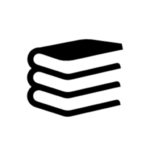Skip to content- (TCO All) For the next set of questions, you will first select ONE of the TCOs of the course. Then, you will be asked to write an essay about the project you worked on this term over your two companies’ change program based on the TCO you selected above. Select the TCO your essay question will cover:
- (TCOs A,E) Your project this term asked you to compare and contrast two companies’ change projects or programs for change. This question will review what you learned about the change projects in a continuation of your project …….. B. Name two strategies of handling these pressures that you would (have) suggested to the company leaders as being the most effective in managing those pressures during the implementation phase. (10 points) C. Defend your positions with details about why you feel your strategies would assist with handling these pressures.
- (TCOs E,H) Your project this term asked you to compare and contrast two companies’ change projects or programs for change. This question will review what you learned about the change projects in a continuation of your project…….You will assess the “sustainability” of the changes which occurred in the companies you ………. the company can, should, or DID take) to make it SUSTAINABLE? What theories did you consider in coming to this conclusion? Do you think this change will still be in place in one, five, or ten years? Why or why not?
- (TCO All) This question does not address your course project. This change scenario is envisioned instead, for this question. First, the scenario, and then the question.
Scenario: You have been asked to handle a project where the company is going to close the plant in your company and offer all of the ……… theory for this change project? What would be the pros/cons of using nStep? Which nStep would you recommend for this if you use one? Of the two methods (nStep or OD), which would you recommend we use for this particular change program? Why? - (TCOs C,D) Your project this term asked you to compare and contrast two companies’ change projects or programs for change……..Consider ONE of your company’s change projects (not both companies – just one.) State the company and the change process/program/project. Name the leader of the change from that company. Answer the following questions about that change:A. Would you characterize your leader as the ……….. you feel your leader was one or the other.B. Evaluate the leader’s implementation of the change as it compared to the company’s vision and mission statement. Were they aligned? Did this alignment (or misalignment) contribute to the success or failure of the change? Why or why not?
- (TCO A) When JetBlue left their customers sitting on the tarmac for hours on Valentine’s Day, and their CEO was ultimately terminated as a result, the company was responding to (pick the best group)
- (TCO A) Which of the following best shows forces for change vs. forces for stability?
- (TCO B) Which of the following best defines the “congruence” model of diagnosing change?
- (TCO B) During the diagnosis for change period, it is important to analyze the stakeholders for their readiness to change. Using the power-interest matrix, you review the level of interest and amount of power of stakeholders and determine the following:
- (TCO C) The Burke-Litwin model states that there are four transformational factors of change. Identify the answer below which contains at least three of those factors.
- (TCO C) “This organization is running like clockwork!” This statement by a company leader is likely to result in “no change” because
- (TCO D) The art of a leader managing the meaning of a vision for followers and aligning it with his or her values is called
- (TCO F) The Emotional Intelligence domains and associated competencies are used to help us determine when a potential change agent, or person, is ready for leadership. When a person exhibits the competencies of integrity, initiative, and optimism, we know he or she has reached the stage of
- (TCO G) One day, while on the company elevator, the head of HR is talking to the CEO and doesn’t realize his speaker phone is on when the CEO asks, “Do you think that we can afford to keep the downtown branch of the company open? Or is it time to think about across-the-board layoffs?” The HR head frowns, turns off the speaker and replies, “I’ll call you later” and hangs up. Four employees from the downtown branch are on the elevator and hear this comment. The HR head tells the four employees (whose names he does not know), “Say nothing about this. You heard nothing.” They immediately rush to their cubicles and begin spreading the word. The gossip has hit the entire department and local news agencies by the 6:00 news that night……… We have no current plan to lay off anyone.” This is an example of what type of communication plan on the part of the CEO?
- (TCO G) Toxic handlers, as related to change management communication, do the following:
- (TCO H) A sign that a change is “sustained” could be seen as
- (TCOs G,H) Review this story and pick the best answer based on your understanding of change management practices:
Company X,Y,Z establishes a vision for change where “cutting costs is critical to our survival” and establishes a reward system to the department which cuts costs the most in one quarter, and states it will ……….. They win the 1st quarter reward. In quarter 2, the IT team cuts expenses the most by ending the purchase of all new software or PCs. In quarter 3, the production line cuts their expenses the most by laying off 60% of the workers (sales have dropped significantly and technology problems have slowed production, so this was needed anyway.)

